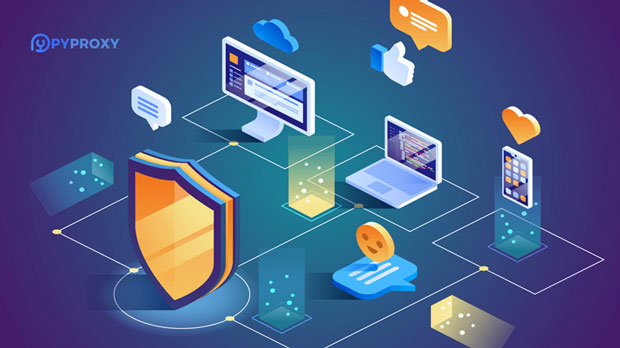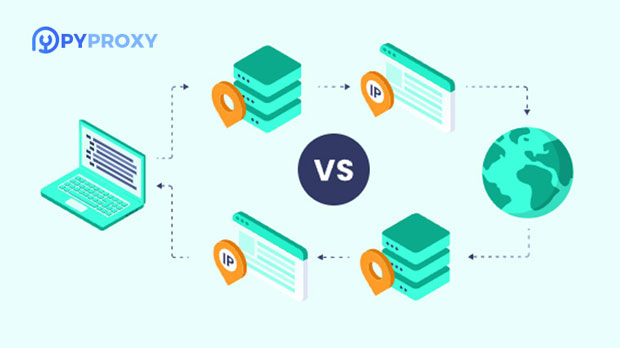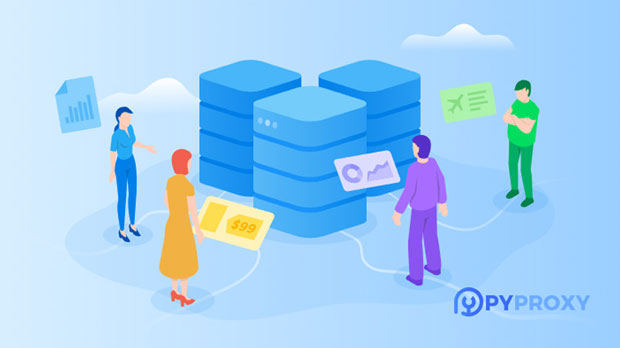How does PyProxy Static Residential Proxy bypass geo-restrictions?
Geo-restrictions have become a significant barrier for individuals and businesses who wish to access content or services that are blocked or limited to specific regions. PYPROXY static residential proxies are increasingly being used to overcome these restrictions. These proxies allow users to mask their real IP addresses with those from different geographical locations, enabling access to region-specific content. By leveraging residential IPs, PyProxy offers a more effective solution compared to traditional data center proxies, which are often detected and blocked by websites. In this article, we will dive deeper into how PyProxy static residential proxies work, their advantages, and why they are an essential tool for bypassing geo-restrictions. Understanding Geo-RestrictionsGeo-restrictions, or geographic restrictions, are mechanisms used by websites, online services, and streaming platforms to limit access to content based on the user's geographical location. These restrictions are implemented using the user's IP address, which can reveal their physical location. For instance, a video streaming platform may only allow access to specific movies or TV shows for users in the United States, while users from other countries are denied access. Other types of geo-restrictions include region-specific pricing, access to certain online services, or location-based content in social media platforms. Geo-restrictions are common in many industries, including e-commerce, entertainment, and online research. They are often put in place to comply with local regulations, copyright laws, or to target specific market segments. However, for users who need unrestricted access to global content, these barriers pose a significant problem.How Static Residential Proxies WorkStatic residential proxies, such as those offered by PyProxy, are a form of proxy server that uses real residential IP addresses rather than data center IPs. These IP addresses are assigned by Internet Service Providers (ISPs) to individuals' homes, and they are considered much more legitimate compared to data center proxies. Static residential proxies are different from dynamic residential proxies because they use the same IP address for an extended period, which mimics the behavior of a regular home internet connection.The primary function of a residential proxy is to mask the user's real IP address and replace it with the IP address of a device located in a specific region. By doing so, the user appears to be accessing the internet from a location where the content is not restricted. Static residential proxies are less likely to be detected and blocked by websites because they resemble genuine, user-generated traffic. This makes them particularly useful for bypassing geo-restrictions and accessing region-locked content.Advantages of PyProxy Static Residential Proxies for Bypassing Geo-Restrictions1. Enhanced Privacy and Anonymity Static residential proxies offer a high level of anonymity because they use real residential IPs that are not easily flagged by websites or services. Unlike data center proxies, which are often identified as proxy traffic, residential IPs are associated with legitimate users. This means that PyProxy users can access geo-restricted content without revealing their real identity or location.2. Bypassing Geo-Restrictions and Accessing Region-Locked Content One of the primary benefits of static residential proxies is the ability to bypass geo-restrictions. For example, users can access services or content only available in the United States, such as streaming platforms, without being blocked or denied access. By rotating through different residential IPs, users can access the content they need, regardless of their actual location.3. Avoiding IP Blocking and CAPTCHA Challenges Websites that enforce geo-restrictions often use techniques like IP blocking and CAPTCHA challenges to prevent proxy users from accessing their services. Static residential proxies are much harder to detect because they come from legitimate ISPs. This makes them more effective at avoiding IP bans or CAPTCHA challenges, ensuring uninterrupted access to geo-restricted content.4. Reduced Risk of Detection Due to their residential nature, PyProxy static proxies are less likely to be detected and blacklisted by websites. These proxies are often associated with real user traffic, making it more difficult for websites to distinguish between legitimate users and proxy users. Unlike data center proxies, which can be flagged and blocked easily, residential proxies maintain a low profile, making them ideal for bypassing geo-restrictions without detection.5. Global Access to Content With static residential proxies, users can gain access to region-specific content from any part of the world. Whether it's accessing Netflix libraries in different countries, buying goods from online stores that are only available to certain regions, or using search engines to retrieve local information, static residential proxies open up a world of content and services that would otherwise be inaccessible due to geo-restrictions.Why PyProxy is a Preferred Choice for Geo-UnblockingPyProxy stands out in the world of static residential proxies due to its reliability and performance. There are several reasons why it is a preferred choice for bypassing geo-restrictions:1. Consistency and Stability PyProxy's static residential proxies offer consistency in performance, which is crucial when accessing geo-restricted content. With a static IP, users can maintain stable connections, ensuring smooth and uninterrupted access to region-specific content without worrying about IP rotation or frequent disconnects.2. Wide Coverage of Locations PyProxy offers proxies from various locations across the globe, which provides users with the flexibility to access content from almost any region. Whether users are looking to access services in North America, Europe, or Asia, PyProxy can provide them with residential IPs from those regions, making it easier to bypass geo-restrictions effectively.3. Easy Setup and User-Friendly Interface Another key benefit of PyProxy is its ease of use. Setting up static residential proxies with PyProxy is simple and does not require any technical expertise. The user-friendly interface allows customers to choose the desired location and start bypassing geo-restrictions within minutes.4. Competitive Pricing In comparison to other proxy services, PyProxy offers competitive pricing without compromising on quality. The combination of high-performance residential proxies, affordable pricing, and a user-friendly experience makes it an attractive option for businesses and individuals looking to bypass geo-restrictions.Practical Applications of Static Residential ProxiesStatic residential proxies are used in a wide variety of applications, ranging from personal use to business-related tasks. Some common uses include:1. Streaming Content One of the most popular applications for bypassing geo-restrictions is accessing streaming content. Platforms like Netflix, Hulu, BBC iPlayer, and others often restrict certain shows or movies to specific regions. Static residential proxies enable users to bypass these restrictions and access content from different regions, unlocking a broader library of entertainment.2. Market Research and Web Scraping Businesses often use residential proxies for market research, competitor analysis, and web scraping. Since residential proxies look like regular user traffic, they can be used to gather data from websites that block or limit access to data scraping bots.3. Online Shopping Some online stores impose geographic limitations on products, pricing, and availability. Static residential proxies can help users access region-specific deals and products, allowing them to shop from anywhere in the world.4. Security and Privacy For those who prioritize security and privacy online, static residential proxies can help maintain anonymity. By masking the user's real IP address, these proxies ensure that browsing activity cannot be traced back to the user’s physical location.ConclusionPyProxy static residential proxies offer an effective and reliable solution for bypassing geo-restrictions, giving users access to content and services that would otherwise be inaccessible. Whether for personal use, business needs, or research, these proxies provide enhanced anonymity, stability, and performance compared to traditional proxies. With the increasing demand for unrestricted internet access, PyProxy static residential proxies are becoming an essential tool for anyone looking to navigate geo-blocked content and maintain privacy online.
2025-03-03

























































